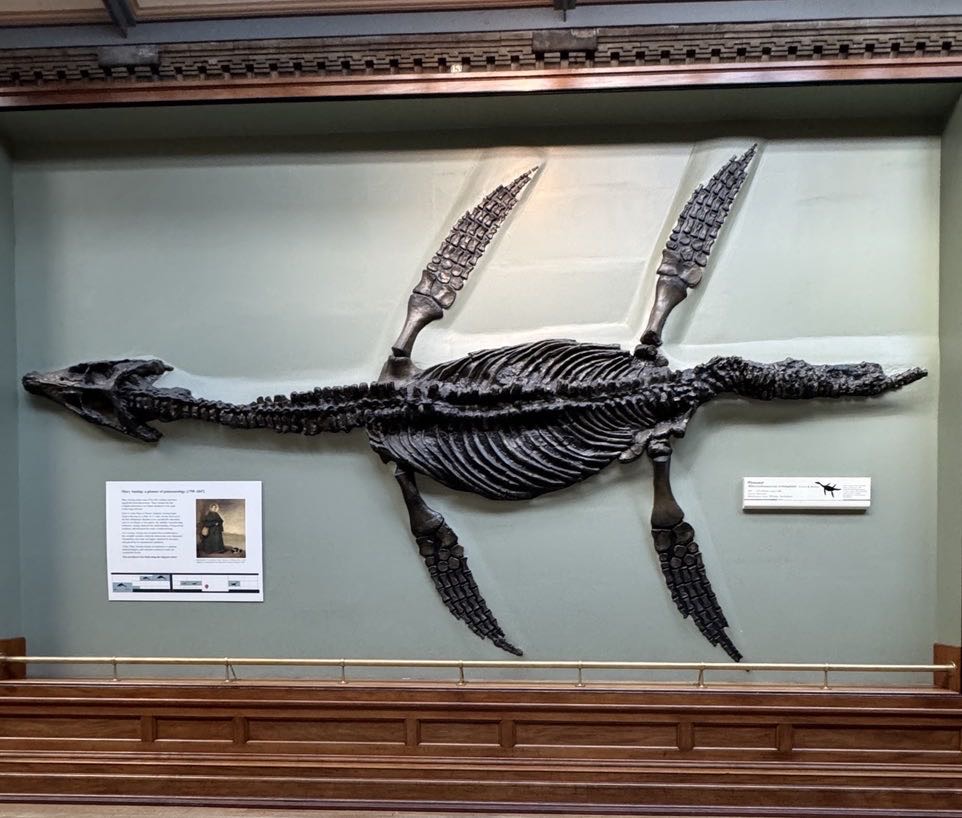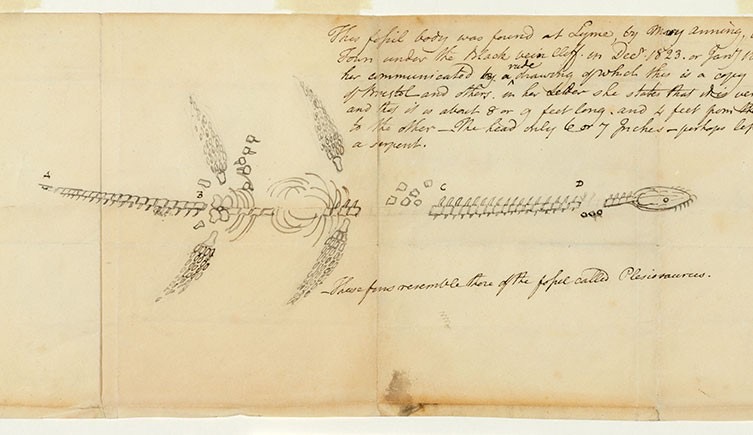
Original was presented to the (National History Museum, London) by Annette Anning in 1935
I first learned about Mary Anning on a trip to the National History Museum, London, UK in Sept of 2024. One flight up from the Blue whale skeleton hanging in the grand entryway, is this gorgeous, wall mounted Plesiosaurus skeleton discovered by Mary Anning in 1823.

Born in 1799 on the south coast of England, Mary Anning spent much of her life exploring the shoreline looking for fossils with her father. They sold their ‘curios’ to well-to-do tourists to support their family. In the process she discovered a number of rare fossils that have added detail to our understanding of marine life millions of years ago. Of course, as both a woman of her time, and a member of the working class, Anning’s scientific contributions were mostly ignored or credited to her wealthy, white, male, fossil collecting customers.
“. . . according to her account these men of learning have sucked her brains, and made a great deal by publishing works, of which she furnished the contents, while she derived none of the advantages.”
– Anna Maria Pinney writing about her friend Mary Anning (as quoted in Lang 1954)
Her writing was never published in any scientific journal with exception of an excerpt of a letter correcting the Magazine of Natural History’ editor on details about a prehistoric shark known as Hybodus. And while her work helped establish the the Geological Society of London, the society refused to admit her and only allowed women access in 1904, nearly 60 years after Anning’s death.

Today Anning is known as ‘the greatest fossilist the world ever knew’. In addition to the Plesiosaurus, she was the first to correctly identified an Ichthyosaurs skeleton. She found the first remains of the pterosaur: Dimorphodon, and pioneered the study of fossilized poo .
In addition, the coast line where she made her discoveries is now known as ‘The Jurassic Coast’ The area is part what’s known as the Blue Lias formation. These rock deposits date to between 2010 – 195 million years ago and are considered one of the richest fossil locations known for the number and complexity of fossils, specifically marine based, including many, whole or nearly complete specimens, giving us an imprint of what was once a large, marine ecosystem. The location was made a UNESCO world heritage site “for the Outstanding Universal Value of its rocks, fossils, and landforms”
For More Information:
“The ichthyosaur in the room” discusses Anning’s work and how science is still not great about crediting Citizen Scientists for their contributions.
Mary Anning, Paleontological Research Insitiute Take a look at the great slide showing Anning’s sketch compared with her fossil.
Mary Anning’s House, Lyme Regis Museum
Mary Anning (1799–1847) of Lyme; ‘the greatest fossilist the world ever knew’
